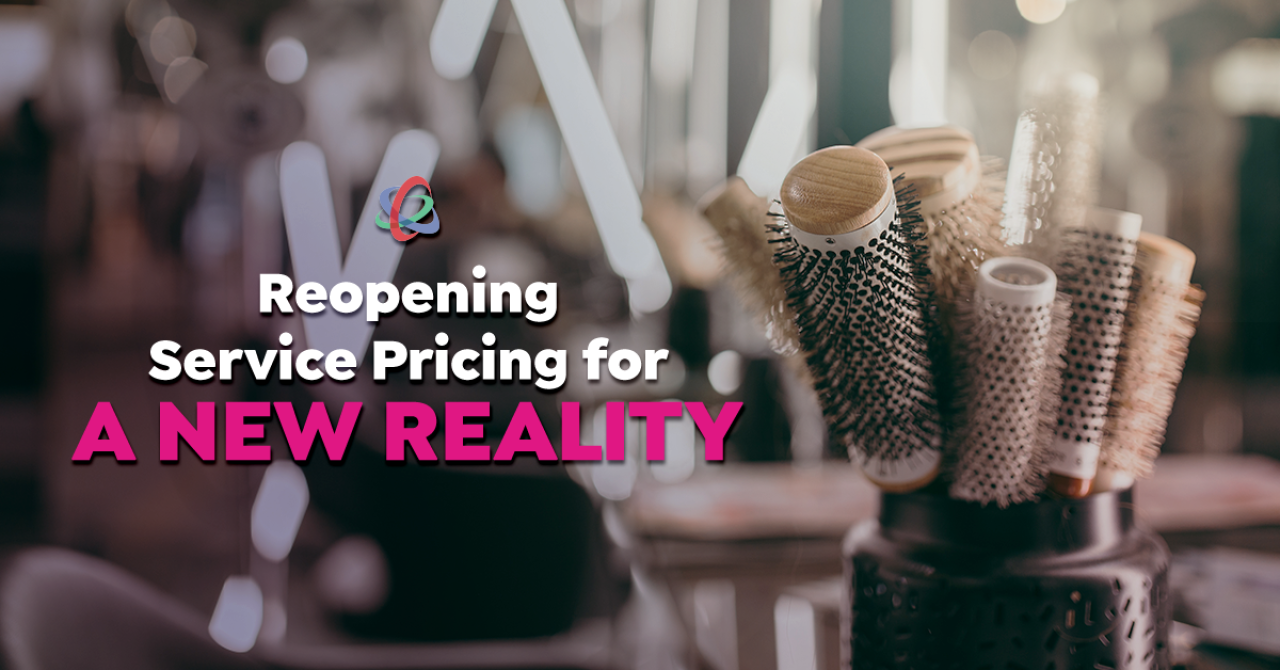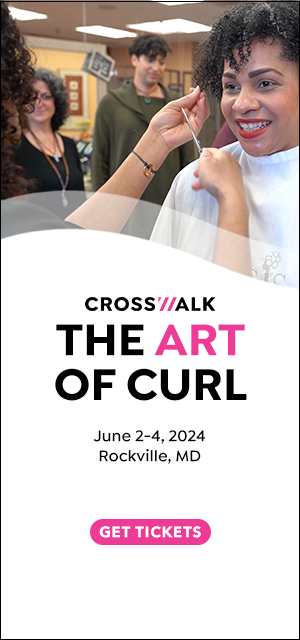Salon/Spa Reopening Service Pricing for a New Reality

- Screening and how to allow clients to enter the salon/spa.
- Occupancy based on square footage.
- Clean and sanitized capes and gowns for clients.
- Face masks and face shields for service providers.
- Single-use rubber gloves … and lots of them.
- Face masks for clients … and supplying face masks (free or for a fee) if clients don’t have one.
- Shampooing and protecting the face.
- Blow drying restrictions.
- Sanitized tools, combs, brushes, etc.
- Sanitizing workspaces before and after each client.
- And the list goes on, and on, and on.
Next was operating logistics that include:
- Station separation.
- Client appointment scheduling.
- Scheduling of service providers.
- Extending service time standards to allow for sanitizing between clients.
- Preparation of sterilized tools and implements.
- The cost of a massive increase in laundry.
- The cost of disposable PPE.
Finally, there was/is the challenge of generating sufficient revenue to meet increased operating expenses due to COVID-19, fixed costs (rent, utilities, insurance, etc.), and the reality that your salon/spa has fewer service hours to sell because of social distancing guidelines.
FACT: In the salon/spa industry, service pricing is always a sensitive and emotional challenge. Here’s just a sampling of what’s been said for years:
- Salon/spa pricing has not kept up with the pace of inflation.
- We’ll lose clients if we raise prices.
- Raising prices at reopening is not the right thing to do. Many clients are on or just coming off unemployment.
- Clients will wait longer between visits with or without a price increase.
- Service providers are terrified to discuss price increases with clients.
- Clients need advanced warning that prices are increasing.
- Some clients will be grandfathered and never pay the new pricing.
REALITY CHECK: Costs are going to increase during the reopening process and may continue to increase over the next few months and years. If revenues do not quickly exceed all payroll and operating expenses, the reopening will be short lived. Simply put, it’s going to get financially uglier than where you’re at now.
Please don’t shoot the messenger — you probably need to raise your service prices.
You know exactly how much you pay for a bottle of shampoo and all other retail products you sell. Next, you add a desired profit margin, usually 50%, to arrive a selling price to cover your retail business’s share of handling, fixed costs, and contribution to profit.
- That 50% gross profit isn’t all keepers. Retail doesn’t get to live in your business for product cost alone. It contributes to overhead and fixed costs.
The challenge is that the majority of salon/spa owners set service prices based on competitor pricing, perceived value, demand — everything except the true cost of delivering services. Interestingly, this means that competitors set their prices on guesswork too.
FACT: Service pricing begins with knowing your cost per hour. Once you know the cost to deliver one hour of service, you can add your desired profit margin.
How to calculate your cost per hour
For simplification, the following steps are a condensed version of the process we teach and coach at Strategies.
Step One: How many revenue producing hours does your salon/spa have for sale?
- This is the total number of scheduled hours (payroll hours) you have available for sale in one month.
- Revenue producing hours IS NOT based on the total number of chairs, stations, treatment rooms and the total hours your salon/spa is open.
- You can only sell service hours if there’s a service provider scheduled to perform those services.
Step Two: What is your current average monthly productivity rate?
- Revenue producing hours ÷ Hours sold = Productivity Rate
Step Three: On average, how many hours are sold per month? Multiply your monthly revenue producing hours by your average or projected productivity rate.
Clearly, many things will be different upon reopening, but going through this calculation is still best the approach to zero in on your cost per hour.
Step Four: Using Profit & Loss Statements prior to COVID-19, calculate your total average monthly Cost of Sales (service payroll, professional product costs, credit card processing) and your total average General & Administrative Expenses (guest services payroll, owner pay, rent, utilities and each and every other operating expense).
- Point 1: Do not include any retail product cost in your calculation.
- Point 2: Add in the approximate monthly costs you expect to incur due to COVID-19 including PPE, laundry, sanitizing products and materials, etc.
Step Five: To arrive at your cost per hour, divide step four, total expenses, by step three, average hours sold per month.
You now have the exact cost to deliver one hour of service.
Calculating service pricing based on cost per hour
OBJECTIVE: To find the best selling prices for salon/spa services based on time, cost and desired profit margin.
PROFIT MARGIN is the difference between selling price and cost. If you want a profit margin of 15%, divide your cost by 85%. (100 – 15 = 85) Don’t make the common mistake of just adding 15% to cost to get your selling price. You will not get the full 15% profit margin that way.
- IMPORTANT: “Profit margin” and “mark-up” are different calculations
EXAMPLE: If your cost per hour is $85, and you want a 15% net profit (best to build in margin for error), the math looks like this:
$85 cost per hour ÷ 85% = $100 selling price for a ONE hour service
A 90-minute service would sell for $150
A 45-minute service would sell for $75
KEY: For each additional 15 minutes a service requires, add an additional $25.
WHERE DOES THE PRODUCTIVITY RATE FIT IN?
It’s simple. The higher your productivity rate — the more efficiently you’re utilizing your resources — the lower your cost per hour and the higher your profit margin. Likewise, if your productivity decreases, your cost per hour increases and the lower your profit margin will be.
Here’s my challenge to you: Calculate your cost per hour using the above steps. Next, add your desired profit margin to achieve what your salon/spa needs to charge for services and protect profit.
To help you out …
We have added a new Cost per Hour spreadsheet to our FREE 13-Week Cash-Flow Recovery Plan website.
If you’re already registered, get in there and create a new Cost per Hour spreadsheet from the Templates.
If you haven’t registered for our free 13-Week Cash-Flow Recovery Plan website, you can sign up here, and then follow the instructions that will arrive via email.








Comments
No comments found. Start the conversation!
Leave a Comment